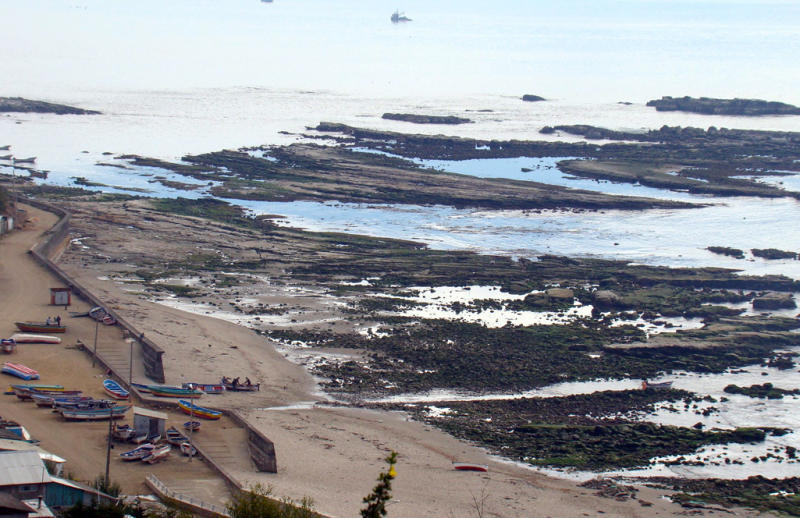Science News
Life from Destruction
May 24, 2012

The Academy’s exciting Earthquake exhibit and planetarium show open this weekend: “Prepare to be moved.” Literally.
One of the more engaging and interesting themes of the new exhibit is how earthquakes affect life on our planet. Live ostrich chicks demonstrate how ratites—as well as marsupials and plants—can live on separate continents, yet still be very closely related. Why? Earthquakes. The same movement of tectonic plates that causes destructive earthquakes can also provide constructive conditions for life over a large timescale (think millions of years).
But what if these life-constructive conditions could be witnessed over months, instead of millions of years? A recent study in PLoS ONE shows the positive (and negative) effects on life from the 8.8-magnitude 2010 Chilean earthquake and tsunami event.
In a scientific first, researchers from Universidad Austral de Chile and UC Santa Barbara’s Marine Science Institute (MSI) were able to document the before-and-after ecological impacts of the earthquake on coastal habitats.
Their findings were a bit serendipitous. The scientists were already knee-deep in a collaborative study of how sandy beaches in Santa Barbara and south central Chile respond, ecologically, to human-made armoring such as seawalls. As part of that project, the Chilean team surveyed nine sandy beaches along the coasts of Maule and Bíobío in late January 2010. The earthquake hit in February.
Realizing their unique opportunity, the scientists quickly changed gears and within days returned to the Chilean beaches to reassess their study sites in the catastrophe’s aftermath. They have returned many times since, diligently documenting the ecological recovery and long-term effects of the earthquake and tsunami on these coastlines, in both natural and human-altered settings.
In some cases, the event drowned beaches where the tsunami hit, and in others, the event widened and flattened beaches where the earthquake brought uplift. The drowned beach areas suffered mortality of intertidal life; the widened beaches quickly saw the return of plants and animals that had vanished due to the effects of coastal armoring.
“So often you think of earthquakes as causing total devastation, and adding a tsunami on top of that is a major catastrophe for coastal ecosystems. As expected, we saw high mortality of intertidal life on beaches and rocky shores, but the ecological recovery at some of our sandy beach sites was remarkable,” says Jenifer Dugan of MSI. “Dune plants are coming back in places there haven’t been plants, as far as we know, for a very long time. The earthquake created sandy beach habitat where it had been lost. This is not the initial ecological response you might expect from a major earthquake and tsunami.”
“We knew that building coastal defense structures, such as seawalls, decreases beach area, and that a seawall results in the decline of intertidal diversity,” says lead author Eduardo Jaramillo, of Universidad Austral de Chile. “But after the earthquake, where significant continental uplift occurred, the beach area that had been lost due to coastal armoring has now been restored. And the re-colonization of the mobile beach fauna was under way just weeks after.”
Image: Eduardo Jaramillo